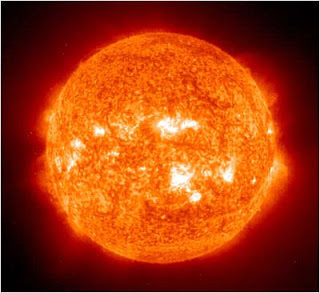Green gadgets make our collective heart go pitter-patter. We feel good when we can be part of the solution. Solar-powered gadgets have become de rigueur in our attempts at shrinking our carbon footprint. And utilizing the power of the sun is the one bright shining beacon of the alternative-energy movement. But there is a dark side to solar energy.
Materials used in solar panels are toxic.
Because solar is the hip, happening alt-energy trend du jour, the number of photovoltaic cells produced globally has increased dramatically in the past few years. But unfortunately, many of the solar panels manufactured today are made with cadmium, a highly toxic carcinogen that can cumulate in plant, animal, and human tissues. The Silicon Valley Toxics Coalition has recently published a 45-page report, “Toward a Just and Sustainable Solar Energy Industry,” claiming that many of the environmental risks associated with the production and disposal of solar panels are not currently being addressed by the industry. And because solar panels have a shelf life of 20 to 30 years, the Coalition claims that the panels have the potential of creating the next wave of hazardous e-waste when they “die.” What to do? Clearly, as the solar industry grows, environmentalists and consumers must demand that manufacturers develop systems to ensure that solar panels are recycled and their hazardous toxins kept out of our ecosystem.
China is dumping hazardous waste from solar factories in fields.
According to the Washington Post, in the race to cash in on the world’s demand for solar products, China been leading the charge in producing polysilicon, a key component in sunlight-capturing wafers. Unfortunately, China is not enforcing environmental regulations, and many of the new factories are dumping toxic silicon tetrachloride (a byproduct of polysilicon production) directly into nearby farmlands. (Just for perspective, 4 tons of this toxic byproduct is produced for every ton of polysilicon.) Because it is expensive and time-consuming to set up systems to recycle the hazardous materials, companies are instead dumping indiscriminately, and people close to these sites are complaining of illness, crop failures, acrid air, and dead fields. How to proceed? Alt-energy companies around the globe need to make sure the factories from which they acquire their solar components are practicing environmentally responsible manufacturing.
We use fossil fuels to make green energy.
Yes, solar power produces clean energy, but it requires utilizing our current resources to produce it. For the green movement to be truly sustainable, we need to make sure we are not trading one environmental problem for another. Yes, the world needs renewable energy as our fossil fuels dwindle, but we need to make sure we are not polluting and depleting to acquire and perfect the new technology. The good news.
Greensters can take heart, though. There is a still bright side to solar. According to recent studies cited in the Scientific American, while it takes resources and energy to make solar panels, we could still reduce our greenhouse gasses by 90 percent if photovoltaic power replaced fossil-fuel-based power. And in the meantime, there are organizations popping up to prevent and monitor rampant e-waste in the solar industry. PV Cycle, for example, is a European company dedicated to collecting and recycling end-of-life modules in solar panels. Smarty-pants tech institutes are exploring the use of carbon electrodes, as opposed to using the earth’s rapidly depleting indium tin oxide, to make LCDs and solar panels. And watchdog organizations such as the Silicon Valley Toxics Coalition (mentioned earlier), which is dedicated to “creating social, economic, and environmental justice and promoting sustainable technology,” are keeping a much-needed eye on the industry. Finally, is there gold in them thar hills? Perhaps reclaiming the precious materials used in solar panels will provide the incentive needed for more recycling/refurbishing companies to crop up and help keep the waste out of our landfills.
H/T to CCF.
